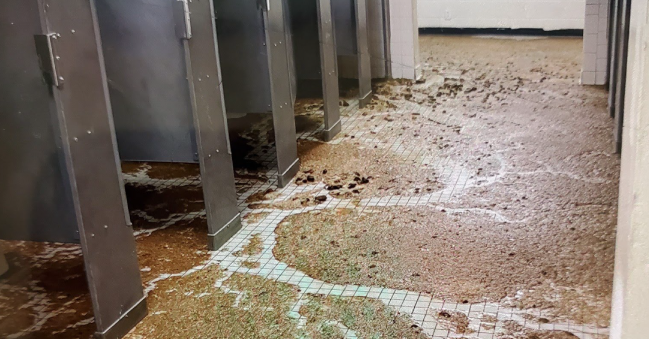
The Department of Defense says it’s getting serious about improving living spaces for troops. This past week the department released its Resilient and Healthy Defense Communities Strategy, a multi-part plan to build new, modern housing and support spaces for service members that would replace aging, broken and often mold-filled barracks and other facilities currently in use.
The issue of substandard and unacceptable conditions in the barracks has become so big that it’s gotten the attention of Congress in recent months. The new strategy acknowledged the problem. Deputy Secretary of Defense Kathleen Hicks called the well being of troops and their families a “national security imperative” that the military has a “moral obligation” to meet.
The Department of Defense currently has a portfolio of more than 667,000 assets such as buildings and other structures across 538 installations. There are also 26 million acres of land and outdoor space. And they’re showing their age. Nearly 80% of the military’s 538 installations were built prior to 1970. According to the strategy, the Department of Defense has already been investing heavily in new housing, spending an average of $11.4 billion per year on new buildings, plus another $15 billion annually on repairs. There’s a problem though. The maintenance backlog is currently estimated to be $134 billion, according to the DoD. And that’s not getting into new issues with barracks that occur each year.
“Our military and civilian workforce rightfully expects a place to live and work that enhances their quality of life,” Dr. William LaPlante, Under Secretary of Defense for Acquisition and Sustainment said in a statement. “We owe it to our Service members and their families to honor the sacrifices they are voluntarily making by creating environments that help our total force bring their best self to the mission—and this strategy will help ensure we are aligning our resources to outcomes which do exactly that.”
Subscribe to Task & Purpose Today. Get the latest military news and culture in your inbox daily.
According to the plan, “livability” will be the driving principle around the new work. Specifically the DoD plans on setting standards built around health, safety, functionality and reliability. That would be seen in air and water quality, decent lighting, sound insulation and other features. The plan also lays out some potential ways to quickly build housing on scale, such as using modular construction. Other plans involve a heavy investment in digital communications infrastructure.
The new strategy is an ambitious one, and a notable admission of failures by the military as opposed to calling it a “discipline issue.” It also comes as the U.S. military deals with poorly maintained aging living facilities that present health risks to troops staying there. Mold has become a widespread issue, with troops documenting several cases of intense black mold over several installations. This month, trash was found to be piling up outside of the barracks at Fort Liberty, with soldiers there initially having to deal with it themselves. The DoD proposal does not specifically mention any of those issues.
The poor living conditions also are not an incentive to much of the public toward joining the military. Several branches of the armed forces are struggling with their recruiting numbers, falling short last year. The military has tried several ways recently to improve quality of life for troops, but dilapidated and mold-filled living spaces remain one of the most constant issues service members face.
According to the strategy, the military would regularly check and inspect barracks and other living spaces to see if the department is meeting its goals. Metrics would be measured based on sensors, other data collection tools including troop surveys and on-site inspections of each space.
The latest on Task & Purpose
- The Air Force wants retirees to help fill gaps in the service
- Navy allows sailors to put hands in pockets as hell freezes over
- The Army’s next-gen combat helmet is now arriving with soldiers
- Navy now allows sailors to wear leggings under PT shorts
- Legendary Marine Scout Sniper Chuck Mawhinney dies at age 75
